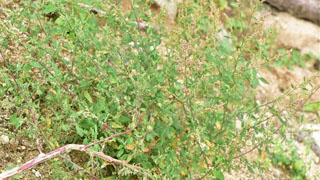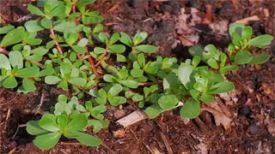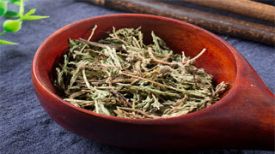
Nicknames: Winter Grey, Quinoa Grey (from the Classic), and Firewood Grey (from the Compendium).
Harvesting and processing: "The ash made from burning firewood and grass. Hongjing said: This is now the yellow ash of washing clothes, which is accumulated and refined by burning various artemisia and quinoa. Its nature is also strong, especially the ash of reeds.
Gong said: Winter ash was originally quinoa ash, but the remaining grass is not real. There are also Artemisia annua ash and Eucommia ulmoides ash (also known as Ling), which are made by burning wood leaves. Incorporating into dyeing households also corrodes meat. Shi Zhen said, 'Winter ash is the ash of firewood burned in the winter moon stove.'. It specifically refers to the ash of Artemisia annua, but it is not necessarily necessary. Originally named Chenhui, he grew up in the valley of Kawazawa, but he was not familiar with it. This ash is not meant to speak of rivers and lakes, but how can it be found solely in the valley? Today, people use lime to pour juice, wash clothes with alkali, make their hair fair, treat sores and corrode flesh, and soak in indigo to dye blue.
Origin: National
Family: Chenopodiaceae
Original plant: mainly quinoa
Plant condition: Annual herbaceous plant
Height 30-150cm. The stem is upright, thick, with sharp edges, green or purple red stripes, and many branches.
Mutual growth of leaves; The petiole is nearly equal to the length of the leaf blade, or 1/2 of the length of the leaf blade; The lower leaves are diamond shaped ovate or ovate triangular, measuring 3-6cm in length and 2.5-5cm in width. The tips are acute or slightly pure, and the base is wedge-shaped. There is usually no powder on top, and sometimes there is a purple red color on top of the tender leaves
Flowers are small in shape, bisexual, yellow green in color, clustered every 8-15 flowers to form a flower cluster. Many flower clusters form large or small cone-shaped inflorescences, growing in leaf axils and branch tops; Flower quilt slice 5, with longitudinal ridges on the back, powdery, slightly concave at the tip, and membranous edges; Stamen 5, extending outside the perianth; Ovary flattened spherical, style short, stigma 2.
The fruit is slightly flattened and nearly round, with the skin attached to the seed and inside the baozi flower. The seeds are abundant, with a double convex mirror like appearance, black in color, glossy, and have shallow grooves on the surface. The flowering period is from August to September, and the fruiting period is from September to October.
Ash obtained after sun drying or sun drying and incineration
Medicinal properties of plant ash:
[Original text] A name for quinoa ash. Spicy taste, slightly warm. Treat black spots, remove warts and polyps, remove necrotic tissue, and scabies. Shengchuan Ze.
[Taste] Spicy, warm.
① The Classic of Chinese Medicine states: "It tastes spicy and slightly warm. ""
② Compendium of Materia Medica: "Xin, slightly warm, toxic. ""
【 Indications and Functions 】 Treatment of Kashin Beck disease, erosion of carbuncle and malignant flesh.
① The main black spot, remove polyps, ulcers, and scabies. ""
② Tang Bencao ":" Boiling small beans causes swelling at the bottom. ""
③ The Classic of Materia Medica: "When vinegar is used to iron the heart, abdomen, cold qi pain, and blood gas colic, it is easy to feel cold. ""
④ The Compendium of Materia Medica states: "Treat dog bites, apply hot ash to them, and erode various abscesses and necrotic flesh. ""
【 Appendix 】 Treatment for Yin cold pain and stuffiness, cold air entering the abdomen, swelling and killing: vinegar and hot ash are frequently ironed. (From "Qian Jin Fang")
[Smell] Spicy, slightly warm, toxic.
【 Indications 】 To remove sunspots, warts, polyps, and gangrene, as well as to remove scabies and itching.
Boiling bean food causes swelling in the lower part (Su Gong). Vinegar and hot ash can cause cold and painful chest pain, as well as blood and gas colic, which can easily hide organs when cold. Treat dog bites by applying hot ash. Also treated for drowning, freezing to death, and erosion of various carbuncles and malignant flesh (Shi Zhen).
[Invention] Shi Zhen said: The ancient formula for treating drowning is to bury a stone of ash from a stove, from head to toe, with only seven holes exposed. After a long time, it will disappear. If a fly drowns and dies, try burying it in ashes. Even if it lives in a short time, it is very effective. Covering gray is warm and can also remove water.
[Attachment] New Fifth.
Drowning: Only then can we see the truth.
If you freeze to death after falling into water and only have a slight breath, do not use fire to roast. Use a cloth bag to hold hot ash and keep it in your heart. When it's cold, change it. Wait until your eyes open and mix it with warm wine. (Pu Ji Fang) Cold and painful, cold air enters the abdomen, swollen and deadly: vinegar and hot ash, frequently ironed. (From "Qianjin Fang") Soup fire burns: ashes in the pancake stove, sesame oil mixed and applied. Not allowed to touch water. Still seeking shelter from the wind. (Kou's "Yan Yi") When a dog bites a person, apply bitter wine and ashes, or hot soup. (From "Qian Jin Fang")“


